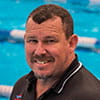What Equipment New Swimmers Need to Start Swimming and How to Care for It
New to Masters Swimming? Here are some items you’ll want to have in your gear bag
When you join a Masters group, of course you know to bring suit, goggles, cap, and towel. But there are some other pieces of basic training equipment that will both enhance your training and help your swimming evolve. There are other pieces of equipment that are specific to a certain level of training and caliber of athlete. How do you know what’s best for starting out? Here’s a list of the basic items that most programs use and why they help or enhance your training.
Things That Are Great for Newbies
If you look around at the bags on the pool deck of any Masters workout, you’ll notice a variety of equipment in a bunch of different shapes, sizes and designs. Many of these items have been acquired by swimmers over years of swimming. If you’re just starting out, keep it simple and use things that will help your technique
- Fins—These are a staple for a lot of Masters programs and for good reason. First, they provide extra resistance when you’re kicking. This helps strengthen the kicking movement as it’s pretty complex and goes beyond just having strong legs, as many Masters swimmers who come from a running or cycling background have discovered. You’ll also notice a variety of blade lengths and designs. A medium-blade fin with maybe 6 to 8 inches past the toe is a good place to start. Too long may cause poor technique and damage to your ankle, especially if you lack flexibility in that area. Fins that are short do have a purpose, but if your goal is extra propulsion, skill acquisition, and strength building, it’s best to start off with the medium fin.
- Pull buoy—These little foam devices, placed between your thighs while swimming so you don’t kick, allow you to float your hips. There are several reasons for using one but for most, it allows you to focus on just the pulling motion rather than pulling and kicking at the same time. These are great for setting up an effective catch while eliminating that sinking feeling when you slow down your stroke rate to focus on your technique. There are lots of different designs out there but they all have the same basic function.
- Swimmers snorkel—These are centered in front of the face rather than off to the side of the head as scuba snorkels are. They’re awesome because you can leave your face in the water and concentrate on your stroke without worrying about needing to turn or lift your head to breathe. A snorkel allows you to isolate just one skill to work on, while staying aerobic.
Things You Can Get Later On
While you were looking around at bags on the pool deck, you probably noticed a bunch of other equipment in other swimmers’ bags. Some of it may be a good idea depending on what you are doing but not necessary to get started.
- Kickboard—Most would put this in the basic category of equipment, and many facilities have them available for use. Not all swimmers should use them, as laying your arms on the board, craning your neck up, and arching your back can cause some discomfort and throw your swimming posture off. There is benefit, however, especially when working on breaststroke kick, to having the ability to be in the head up position to kick. To alleviate neck issues, you can kick with the board extended and your face in the water, and even better, use a snorkel.
- Hand paddles—Here again, there are lots of shapes and sizes. In this case size matters a lot. The shoulder is a very complex joint. Paddles add extra resistance and over time using them can cause damage. Shoulders are not like fingernails—they don’t grow back after you damage them. Start with small paddles until you build skill and strength, then try larger sizes if you wish. It’s important to remember that this is only helpful if you have good technique.
- Ankle strap—These are used typically with a pull buoy and keep the feet and legs together, so you don’t have to squeeze your thighs to keep the pull buoy in place. It’s impossible to kick while wearing one, so that tendency to kick with your pull buoy is eliminated. An ankle strap is great for working on alignment and using your core for rotation rather than your feet.
Care of Your Equipment
The good news is that most of your swimming equipment is reasonably priced, but why replace it more often than necessary? Here are a couple of tips to help prolong the life of your equipment.
- Rinse—Be sure to rinse your equipment in fresh, cool water after each use to remove chlorine and salt, both of which are corrosive. Manufacturers may also include other care instructions on the product packaging or their website.
- Store—Many of us swim in the morning and leave our equipment bags in our cars during the work day. The temperature extremes can wreak havoc on your equipment. If you have a locker at the pool that is best, but if at all possible, try to not leave your equipment in your car. If it gets left in your car for a while, it could become a science experiment with things growing on it.
- Wash—Again, this is where you should follow manufacturers' instructions, but cleaning with a mild detergent from time to time is always a good idea.
Categories:
- Products and Reviews
Sign Up for Great Swimming Content
















